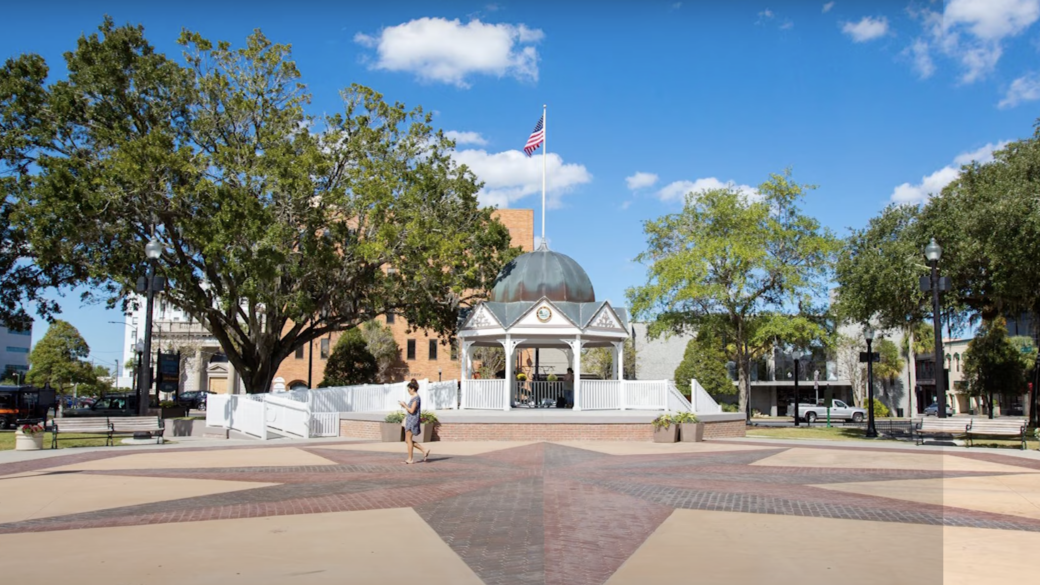Reasons Why Ocala Is So Dangerous
Ocala, nestled in central Florida, has drawn attention for diverse reasons throughout time. Many admire it for its scenic allure and vibrant horse-riding culture. However, some associate it with worrisome data and stories. It’s vital for prospective homeowners and tenants to be aware of these challenges before deciding. In this article, we’ll delve into the 10 reasons why Ocala is so dangerous, starting with the tenth reason and culminating with the most impactful.
We’ve also covered reasons why Memphis is so dangerous.
10. Expanding Population and Urbanization
First on the list of the reasons why Ocala is so dangerous is the rapidly expanding population. Mirroring numerous cities in the US, Ocala has seen a marked rise in new residents, resulting in amplified urban development. Such accelerated expansion can overburden local facilities, encompassing police and emergency responders.
The atmosphere can become charged when there are more people living in smaller spaces and not many ways to keep peace. This could lead to fights or illegal activities.
9. Lack of Adequate Public Facilities
A thriving city needs enough public amenities to serve its residents. Unfortunately, Ocala has grappled with a noticeable deficit in such infrastructure. Parks, recreational spaces, and community hubs hold vital roles in nurturing community unity and offering young people constructive outlets. A lack of these areas can unintentionally lead young people to bad influences because they do not have any constructive activities to do.
Furthermore, the lack of suitable locations for community gatherings prevents residents from building strong neighborhood ties, which could potentially discourage criminal activities.
8. Economic Challenges
Some industries in Ocala are doing very well, but not everyone has been able to enjoy their fruits. Economic inequality can frequently foster sentiments of exclusion and despair. Some may turn to illegal means to survive when they struggle to meet basic needs or are unemployed. It’s essential to recognize that cities confronting significant economic difficulties often record elevated crime rates, and Ocala is no different in this regard.
7. Proximity to Major Trafficking Routes
Ocala’s geographical positioning puts it in close proximity to major trafficking routes. Drug smuggling is common on city interstates like I-75. These highways can morph into channels for criminal operations, ushering in an array of correlated issues.
The influx of illegal substances can stimulate the local drug trade, heightening the potential for violent clashes between competing factions or involving dealers and customers. Because of this, the fact that these major roads are close by makes things even more difficult for local police, who have to deal with both local and travelling criminals.
6. Insufficient Law Enforcement Presence
The lack of police presence in some areas of Ocala is another reason why Ocala is so dangerous. Having a strong and noticeable police presence can stop people from committing crimes. Nevertheless, due to financial constraints, challenges in recruiting, or logistical hurdles, specific neighborhoods within Ocala may not experience the necessary police patrols, particularly during peak periods of criminal activity. This is also an issue in Chester, Pennsylvania.
This lack of sufficient patrolling and quick response can give criminals more confidence, leading to higher crime rates in areas that are not well served. Moreover, if the community perceives a lack of protection or delayed emergency response times, their trust in the police force can erode.
5. Limited Access to Quality Education
Education holds a pivotal position in molding the trajectory of a community. Unfortunately, certain sections of Ocala grapple with restricted access to high-quality educational establishments. In situations where schools suffer from financial scarcity or insufficient staffing, students might find themselves lacking the necessary academic and moral support.
Such a deficit can result in elevated dropout rates, and without a solid educational grounding, young individuals could encounter difficulties in obtaining stable employment prospects in the years ahead. Over time, this situation can perpetuate poverty and crime as people see few ways to improve their situation.
4. High Levels of Property Crime
Theft, vandalism, and burglary are more common in Ocala than violent crimes, and the city has had higher property crime rates than the national average. These crimes can inspire fear and uncertainty in residents. Furthermore, elevated property crime rates can discourage prospective businesses from establishing themselves in the region, potentially depriving the area of employment prospects and economic stability.
The repercussions of this form of crime extend beyond individual property owners, affecting the broader economic well-being and standing of the city.
3. Issues with Substance Abuse
Substance abuse is rising in many American cities, including Ocala. Drug abuse—prescription or illicit—can harm individuals and communities. Addiction has the potential to propel individuals toward criminal activities, spanning from theft to fund their dependencies to more severe acts of violence while under the influence.
In addition to its direct association with criminality, substance abuse also exerts pressure on local medical facilities and rehabilitation centers, which may find themselves ill-prepared to manage the surge of individuals requiring assistance. You can see this being more of an issue in other places in Florida, including Ybor City in Tampa.
2. Fragmented Communities
Strong communities often deter crime. Yet, in Ocala, there are zones where the sense of community is fractured. This disintegration can be attributed to an array of factors, encompassing economic inequalities and cultural distinctions. When neighbors lack familiarity or trust in one another, a conducive environment for criminal activities to thrive is established.
There is reduced communal vigilance and fewer individuals watching out for each other. Lack of community cohesion implies that people may be less likely to report suspicious events or take action in the face of wrongdoing, frequently out of fear or indifference.
1. Inadequate Rehabilitation and Reentry Programs
Arguably, the biggest factor contributing to Ocala’s dangerous image is the absence of comprehensive rehabilitation and reentry initiatives for individuals with prior criminal records. After completing their sentences, the reintegration of these individuals into society should be seamless, preventing them from slipping back into criminal activities.
Regrettably, Ocala falls short in offering programs that aid these individuals in acquiring new skills, securing employment, and accessing psychological assistance. Without support, former offenders may struggle to adjust to life outside of prison, increasing the risk of re-offenders.
Conclusion
Ocala, like other cities, such as Nashville, contends with its own array of obstacles. While it boasts numerous merits, ranging from its scenic charm to lively communities, it’s imperative not to disregard the highlighted concerns. Tackling the underlying origins of these problems necessitates a multi-pronged strategy, encompassing collaboration between local government, law enforcement, educational establishments, and community figures.
Prospective homeowners and renters should not only stay informed but also actively participate in community endeavors aimed at mitigating these challenges. Through joint, determined action and mutual comprehension, Ocala’s inhabitants can collectively strive for a safer and more prosperous future for everyone.


